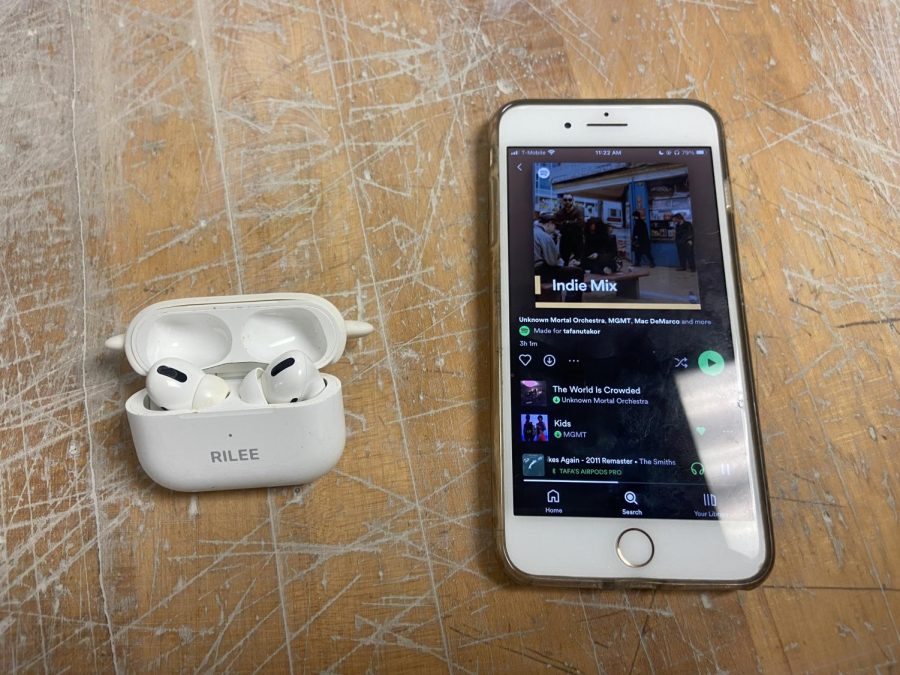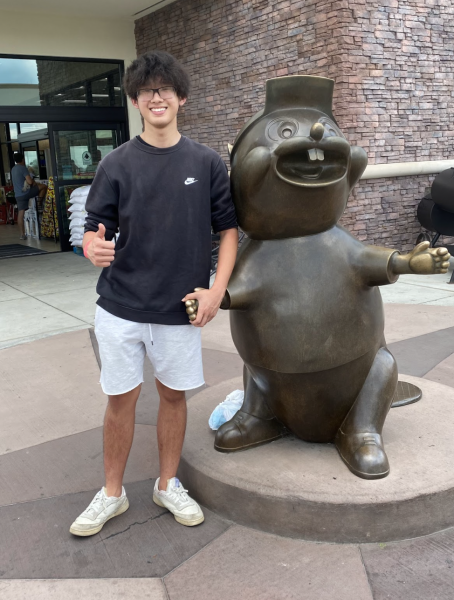Has indie gone past the point of no return?
There are numerous ways of listening to and exploring indie music, whether it be through earbuds or streaming services. For example, Spotify is a great vehicle to get personalized music recommendations for every genre.
March 24, 2023
January 26th, 2010, from Paste Magazine: “Is Indie Dead?” January 16th, 2012, from The Guardian: “Indie rock’s slow and painful death.” October 25th, 2017, from Vox: “The life and death of the indie-rock heyday.“
For the past decade or so, music journalists have been lamenting the rise and fall of indie, writing away on their office computers as they reminisce about the good ol’ days of the charming jangle pop of The Smiths, the sprawling guitar solos of Built to Spill, the shoegaze dissonance of my bloody valentine, etc. Particularly, there seems to be a fixation over the genre’s loosening grip on the cultural zeitgeist. After all, they reason, poptimism and identity-commodification as a response to the corporatization of the music industry must mean indie artists are receiving the short end of the stick. However, by overemphasizing its place in pop culture, they are conflating the traditional business definition of indie with the ethos typically associated with the musical style.
As a refresher, “indie” music is short for independent music, which removes influence from commercial record labels and gives it to the artists. While they can be signed under independent record labels, these distribution companies seek to differentiate themselves from major labels such as Warner Music Group or Universal Music Group through interest in a specific genre or holding anti-establishment sentiments. Similarly, these concepts—independence, aesthetics, community—trickle down to the art produced under this business model. That is why there are so many subgenres under the signifier; regardless if it is indie pop, indie rock or indie hip-hop, they all share common traits in their willingness to break from the mainstream, whether it is a daring production choice or an experimental approach to songwriting.
Through this intersectional understanding, it is clear that fears of a hypothetical indie-doomsday situation are not only unfounded, but actually go against the very foundation of the genre. Established simultaneously in the United States and the United Kingdom during the 1960s, and further revitalized during the punk era of the 70s, the revival of music based on authenticity and accessibility was spurred by a litany of social changes during this time period, ranging from a growing antiwar attitude to a newfound sense of bodily liberation. Regardless, it is paradoxical to zero-in on charts and monetary figures, when the very point of indie music is to transcend capitalism’s chokehold on the industry.
The other argument for the death of indie centers around commercialization and identity. With all artistic movements and their underlying subcultures, there’s a self-inflicted othering that gatekeeps their ‘radical’ or ‘inspired’ ideas from the layman. This was a prevalent discussion within the 70s punk community (accusations of being a poseur were constantly thrown around) and it is a prevalent discussion now (see the backlash when a previously underground artist starts to rise in acclaim and exposure). However, concerns over the pureness of the genre is antithetical if their goal is to keep indie alive. Semantic squabbles over the meaning of indie—or, if it has simply been torn into another empty buzzword—are interesting philosophical questions, but fall flat when considering its role in our culture. Music is such an integral part of adolescent development, and exploration of identity through the formation of personal taste should be rewarded instead of shunned, even if it comes with a period of obsessive posturing.
It’s interesting, though, that indie music can both be viewed as sales poison to music executives and over commercialized to the point of parody. Simply put, their worries fall flat in the face of reality. Indie is not dead: it is thriving and continuously expanding to greater and radical heights. Take a quick glance on Bandcamp, go to the show of a local band, and it will be obvious that there are hidden gems everywhere, begging to share their thoughts and stories and ideas to anybody who is willing to listen.



